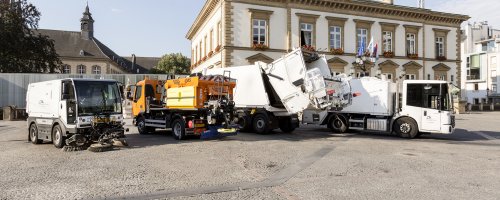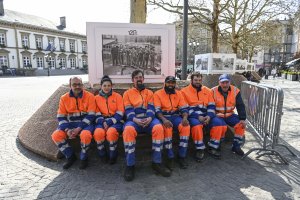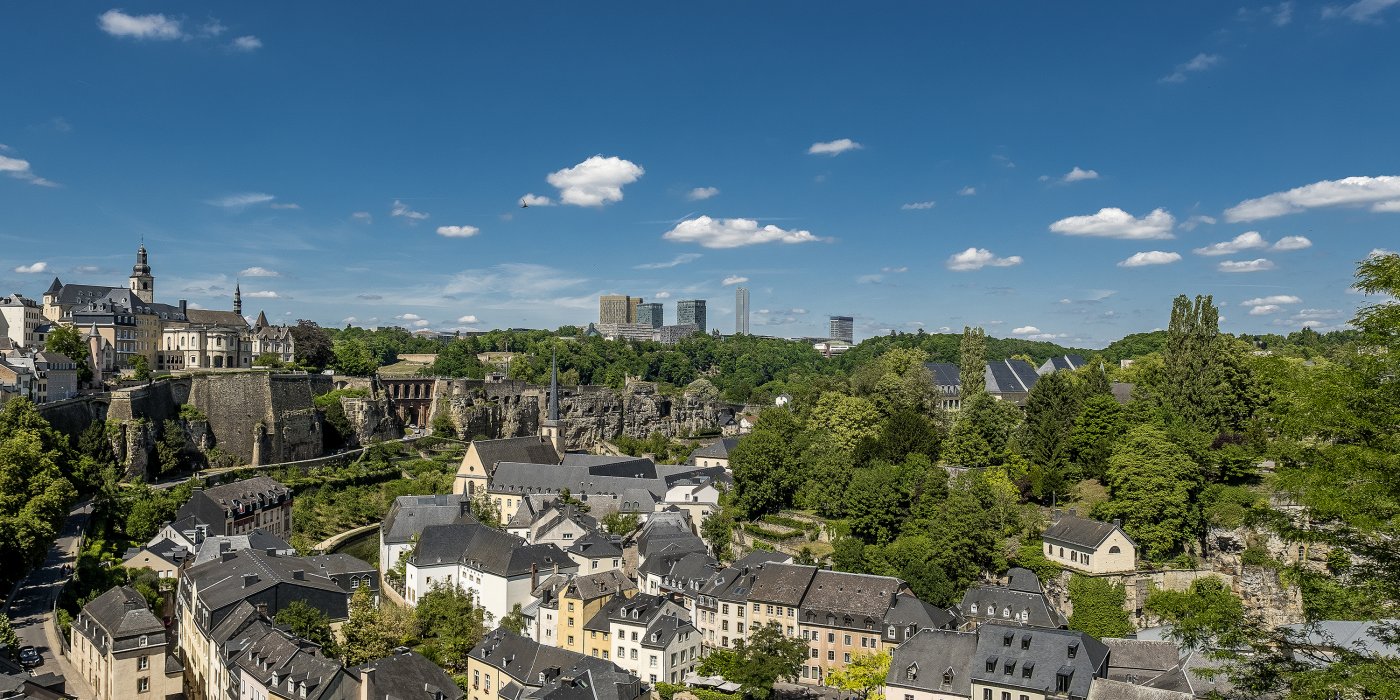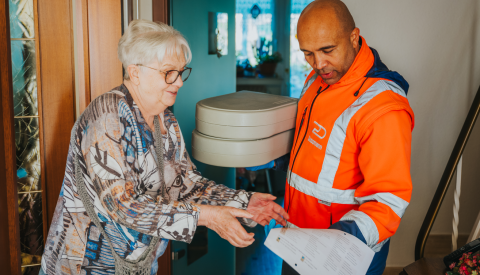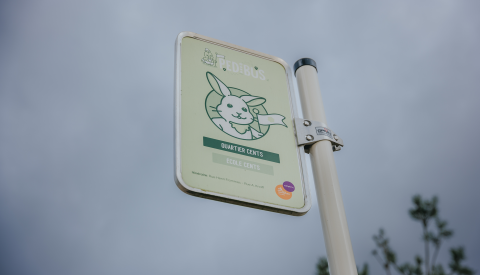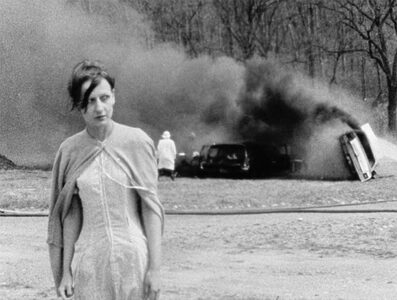"Piffhaff": humble beginnings
The Service Hygiène (Sanitation Department) was founded on 18 March 1898, when Luxembourg City had a population of around 39,000. The municipal authorities purchased a 7.31-hectare plot of land on Route d'Arlon where they built a landfill, along with a number of warehouses and stables. At the time, trash was collected using horse-drawn carts.
The municipal council decided to entrust the city's waste management to its own municipal staff, which has been charged with keeping the city clean since 1 January 1899. Until then, this task had been assigned to private companies.
In 1902, the former latrine-tools depot was transferred to the Route d'Arlon site – hence its nickname Piffhaff (loosely translated as "Poo Yard") – which is still occupied by the Service Hygiène today.








Gradual modernisation
In the 1920s, the Service Hygiène underwent its first major modernisation: In 1921, structural changes had to be made and, in 1928 and 1929, new, more suitable offices and workshops were built, resulting in an improvement in efficiency.
Until 1921, the Service Hygiène used horse-drawn carts to collect waste, which was placed in various open containers, such as old barrels and buckets. In 1921, the city's trash collectors first started using (open-topped) garbage trucks. A decade later, in 1931, Luxembourg became one of the first cities in Europe to acquire closed garbage trucks in order to minimise smells and began providing residents with standardised 60- and 90-litre bins to streamline the waste collection process.
After World War II, the City had to purchase additional waste collection vehicles: These new trucks were equipped with a compacter, enabling them to reduce the volume of the trash collected by 50%.
Improving waste collection
In 1967, to facilitate waste collection and optimise the service provided to citizens, the Service Hygiène introduced plastic waste bins. From 1982 to 1984, these were replaced with plastic "wheelie" bins, facilitating the work carried out by Service Hygiène personnel.
In 1981, the Service Hygiène began collecting waste on a weekly basis throughout the city, whose population had almost doubled since the 1890s. Waste was brought to the SIDOR site (opened in 1976) in Leudelange or the landfill in Cessange (Zéissenger Tipp, closed in 1981).
Introduction of waste sorting
In the 1980s, in response to citizens' growing awareness of environmental issues, the City of Luxembourg introduced the first public waste-collection stations to facilitate the sorting of waste and recovery of recyclable materials. At this time, the Service Hygiène also began curbside collections of paper/cardboard and glass for both residents and businesses.
In 1987, recycling really took off with the opening of the Recycling Centre (now: Resource Centre) at the Service Hygiène site on Route d'Arlon, which was the first facility of this kind in the country. In 2023, the team managing the resource center comprised 20 employees from the Service Hygiène. The centre received 117,000 visitors, with an average of 400 per day, and issed 34,426 access cards.
In the 2000s, the City introduced a series of measures to better protect the environment. In 2000, the City started collecting PMC packaging using the blue Valorlux bags, and in 2010, it began collecting organic waste seperately (brown bins). With the aim of maximising recycling, the City began collecting packaging from businesses in the city centre and Gare district, and in 2016, it started collecting recyclable waste from the twice-weekly markets at made up the team managing the resource center Place Guillaume II.
In addition to its regular collections, the City offers a range of other services (either free of charge or for a fee): additional waste collections, taking out and returning bins on collection day, cleaning bins, taking away bulky items and garden waste on demand, etc.
The Service Hygiène, then and now
When it was first set up, in addition to keeping the city clean, the Service Hygiène was also responsible for the sewage system, emptying septic tanks and managing funerals. Over time, these tasks were entrusted to other municipal departments and the role of the Service Hygiène evolved. Nowadays, the Service Hygiène is in charge of: keeping public areas clean, collecting mixed residual waste, organic waste and recyclable materials, clearing snow in winter and raising citizens' awareness of the importance of reducing waste.
The Service Hygiène currently employs over 400 people and has a fleet of 150 vehicles (collection trucks, roll-on-roll-off trucks, container washers, sprayers and mini-tractors for winter services, sweepers, vans, street cleaners, forklifts, etc.). In 2023, these vehicles covered a total of 1,675,116 km.
In 2023, in addition to mixed residual waste, the Service Hygiène collected 6,601.18 tonnes of paper/cardboard, 5,300.02 tonnes of glass, 3,476.52 tonnes of organic waste and 1,684.04 tonnes of wood.
61,731 tonnes of waste, 44% of which (27,438 tonnes) was recovered through recycling, composting or other treatment processes. Of the 34,293 tonnes of waste incinerated at SIDOR, 63% was transformed into electrical energy to supply around 28,000 households, and 24% into heat to supply around 3,000 households via the district heating network.
As part of its ongoing efforts to optimise the sorting and recycling of waste, the Service Hygiène is currently planning to build a new site with a resource centre in Merl. The works are expected to be completed within the next few years.
